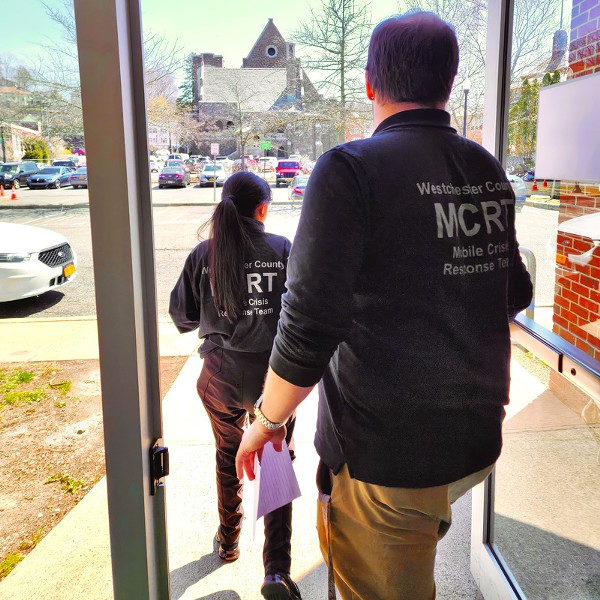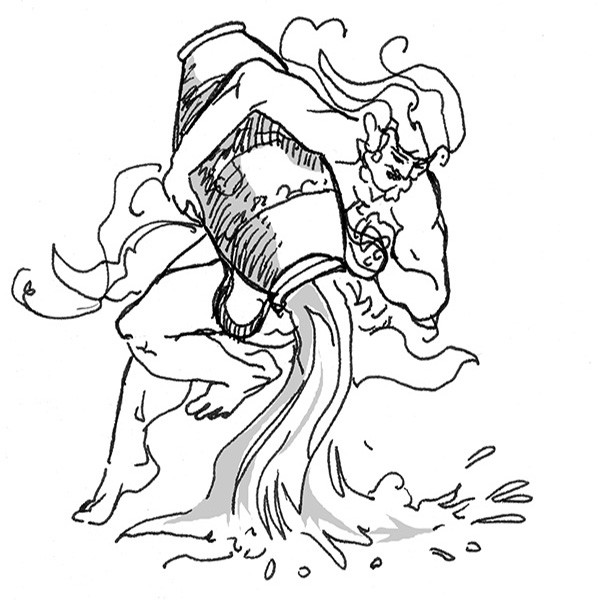“I can’t breathe normal any longer. I just wish I could. My lung capacity has been diminished so much,” says Smith. “I’ve been going to a pulmonary specialist, and with the medication and steroids that I am on it helps somewhat, but I can’t even slow-dance to the completion of a song. I can’t even play with my grandkids. I can’t walk a block without having to stop and rest.”
During the initial months of the World Trade Center cleanup, Smith says he worked 12-hour shifts seven days a week, sleeping in Red Cross stations and returning to his Middletown home maybe once a week. Periodically, he was asked to wet down the perimeter of the site to assist in the removal of the dust that settled after the collapse of the towers, blanketing lower Manhattan with a range of environmental toxins, including pulverized cement and glass fibers, asbestos, highly alkaline particulate matter as well as heavy metals, PCBs, dibenzofurans, volatile organic compounds, and other products of combustion. “A lot of dust was on the window ledges.” Smith explains. “If you had a little bit of wind it would fly around. So if we kept the streets wet it would stick and then mechanical brooms could sweep it up.”
Smith says the visible particulates in the air prompted him at the time to cover his nose and mouth with a handkerchief, but he was not made aware of possible health hazards or fitted for a respirator until over two months after the attacks. And in light of reports in August that the Environmental Protection Agency downplayed potential health risks in the wake of the attacks and failed to provide both workers and residents with adequate warnings, Smith now holds the government accountable for his disability. “Either their testing was inadequate or they just plain lied to us,” he says, despite a strong patriotic sensibility that would lead him “without doubt or question” to participate in the cleanup all over again. “If they were honest, they would have protected us, and a lot of us would not be in the condition we are in now.”
More than two years after former EPA administrator Christie Whitman reassured New Yorkers that their air was “safe to breathe,” thousands of people who worked and volunteered at Ground Zero are now sick, even disabled, from asthma, chronic infections, and other respiratory illnesses. Of the approximate 9,000 who have been screened so far through a federally funded program run by the Mount Sinai Center for Occupational and Environmental Medicine, for example, nearly 80 percent have reported at least one pulmonary symptom that first developed or worsened in the aftermath of September 11. And more than half continue to show persistent symptoms of upper or lower respiratory disease.
“We are finding that these problems are not going away,” says Marie Divan Stelluti, a spokesperson for the program, which recently received additional federal aid to screen 3,000 more patients by March. “People who are walking in for the first time now are still showing the same rate of ailments and respiratory distress as those who were screened last year. It’s disturbing.”
It is disturbing indeed because the debilitating ailments of people like Smith and Orange County resident William Cummings—a former emergency services worker who says he’s been suffering from respiratory problems since helping people escape the collapse of the second tower—appear to corroborate the charges leveled against the EPA by its top watchdog in a written evaluation of the agency’s overall response to the attack on the World Trade Center. According to a report issued by the EPA’s inspector general in August, the agency “did not have sufficient data and analyses” to make a “blanket statement” when it announced on September 18 that the air around Ground Zero was safe to breathe. “Competing considerations, such as national security concerns and the desire to open Wall Street,” the report said, “also played a role in EPA’s air quality statements.”
In addition, the report said that White House officials instructed the agency to be less alarming and more reassuring to the public in the first few days of the attack, citing as an example a comparison of two news releases with their draft versions. The title for the original version of one news release dated September 13 was “EPA Initiating Emergency Response Activities, Testing Terrorized Sites for Environmental Hazards.” The White House changed the second clause to “Reassures Public About Environmental Hazards.” The EPA draft of the other release dated September 16 said: “Recent samples of dust on Water Street show higher levels of asbestos.” The White House version: “New samples confirm…ambient air quality meets OSHA [Occupational Safety and Health Administration] standards”…and “is not a cause for public concern.”
















